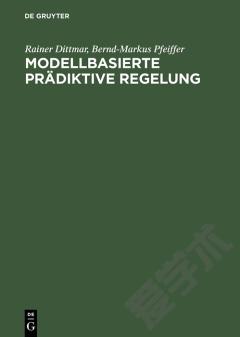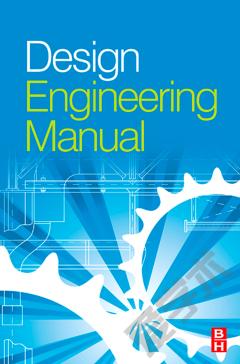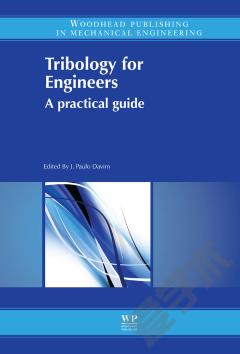Engineering Design via Surrogate Modelling —— A Practical Guide
----- 经过替代建模的工程设计 - 实用指南
Preface. About the Authors. Foreword. Prologue. Part I: Fundamentals. 1. Sampling Plans. 1.1 The 'Curse of Dimensionality' and How to Avoid It. 1.2 Physical versus Computational Experiments. 1.3 Designing Preliminary Experiments (Screening). 1.3.1 Estimating the Distribution of Elementary Effects. 1.4 Designing a Sampling Plan. 1.4.1 Stratification. 1.4.2 Latin Squares and Random Latin Hypercubes. 1.4.3 Space-filling Latin Hypercubes. 1.4.4 Space-filling Subsets. 1.5 A Note on Harmonic Responses. 1.6 Some Pointers for Further Reading. References. 2. Constructing a Surrogate. 2.1 The Modelling Process. 2.1.1 Stage One: Preparing the Data and Choosing a Modelling Approach. 2.1.2 Stage Two: Parameter Estimation and Training. 2.1.3 Stage Three: Model Testing. 2.2 Polynomial Models. 2.2.1 Example One: Aerofoil Drag. 2.2.2 Example Two: a Multimodal Testcase. 2.2.3 What About the k -variable Case? 2.3 Radial Basis Function Models. 2.3.1 Fitting Noise-Free Data. 2.3.2 Radial Basis Function Models of Noisy Data. 2.4 Kriging. 2.4.1 Building the Kriging Model. 2.4.2 Kriging Prediction. 2.5 Support Vector Regression. 2.5.1 The Support Vector Predictor. 2.5.2 The Kernel Trick. 2.5.3 Finding the Support Vectors. 2.5.4 Finding . 2.5.5 Choosing C and epsilon. 2.5.6 Computing epsilon : v -SVR 71. 2.6 The Big(ger) Picture. References. 3. Exploring and Exploiting a Surrogate. 3.1 Searching the Surrogate. 3.2 Infill Criteria. 3.2.1 Prediction Based Exploitation. 3.2.2 Error Based Exploration. 3.2.3 Balanced Exploitation and Exploration. 3.2.4 Conditional Likelihood Approaches. 3.2.5 Other Methods. 3.3 Managing a Surrogate Based Optimization Process. 3.3.1 Which Surrogate for What Use? 3.3.2 How Many Sample Plan and Infill Points? 3.3.3 Convergence Criteria. 3.3.4 Search of the Vibration Isolator Geometry Feasibility Using Kriging Goal Seeking. References. Part II: Advanced Concepts. 4. Visualization. 4.1 Matrices of Contour Plots. 4.2 Nested Dimensions. Reference. 5. Constraints. 5.1 Satisfaction of Constraints by Construction. 5.2 Penalty Functions. 5.3 Example Constrained Problem. 5.3.1 Using a Kriging Model of the Constraint Function. 5.3.2 Using a Kriging Model of the Objective Function. 5.4 Expected Improvement Based Approaches. 5.4.1 Expected Improvement With Simple Penalty Function. 5.4.2 Constrained Expected Improvement. 5.5 Missing Data. 5.5.1 Imputing Data for Infeasible Designs. 5.6 Design of a Helical Compression Spring Using Constrained Expected Improvement. 5.7 Summary. References. 6. Infill Criteria With Noisy Data. 6.1 Regressing Kriging. 6.2 Searching the Regression Model. 6.2.1 Re-Interpolation. 6.2.2 Re-Interpolation With Conditional Likelihood Approaches. 6.3 A Note on Matrix Ill-Conditioning. 6.4 Summary. References. 7. Exploiting Gradient Information. 7.1 Obtaining Gradients. 7.1.1 Finite Differencing. 7.1.2 Complex Step Approximation. 7.1.3 Adjoint Methods and Algorithmic Differentiation. 7.2 Gradient-enhanced Modelling. 7.3 Hessian-enhanced Modelling. 7.4 Summary. References. 8. Multi-fidelity Analysis. 8.1 Co-Kriging. 8.2 One-variable Demonstration. 8.3 Choosing X c and X e . 8.4 Summary. References. 9. Multiple Design Objectives. 9.1 Pareto Optimization. 9.2 Multi-objective Expected Improvement. 9.3 Design of the Nowacki Cantilever Beam Using Multi-objective, Constrained Expected Improvement. 9.4 Design of a Helical Compression Spring Using Multi-objective, Constrained Expected Improvement. 9.5 Summary. References. Appendix: Example Problems. A.1 One-Variable Test Function. A.2 Branin Test Function. A.3 Aerofoil Design. A.4 The Nowacki Beam. A.5 Multi-objective, Constrained Optimal Design of a Helical Compression Spring. A.6 Novel Passive Vibration Isolator Feasibility. References. Index.
{{comment.content}}








 京公网安备 11010802027623号
京公网安备 11010802027623号